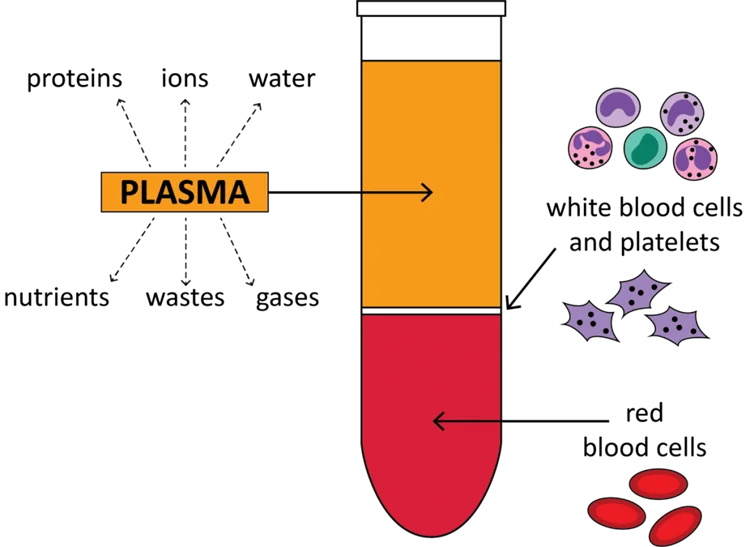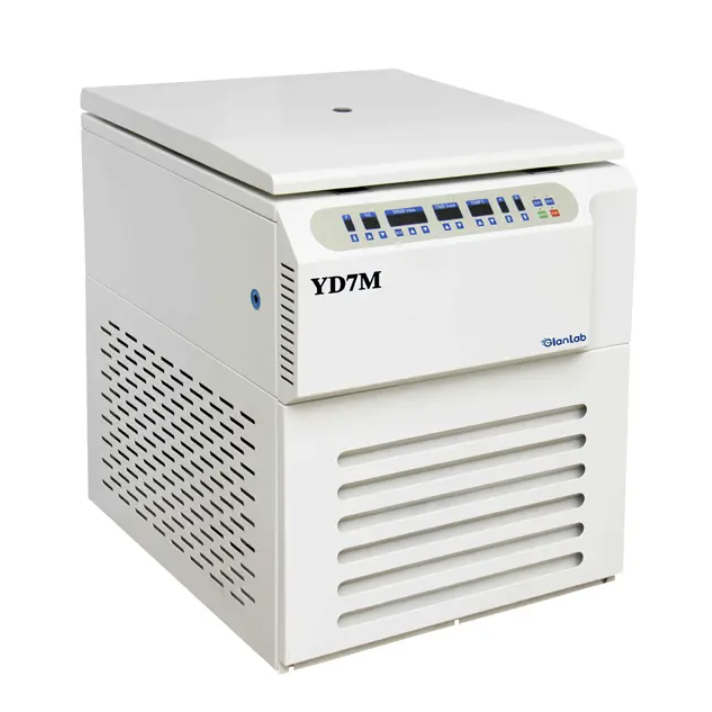1、Why Do We Have To Separate Blood?
2、What Are The Components Of Blood?
3、Which Three Layers Are Being Separated From Blood Centrifugation?
4、How Long Dose It Take To Centrifuge Blood?
5、What Are The Recommended Centrifuge Speed For Blood?
6、Blood Separation Centrifuges
Why Do We Have To Separate Blood?
Most laboratory tests are not conducted on whole blood but rather on plasma or serum. Plasma refers to blood without the cellular components, while serum is plasma with the fibrinogen removed.
The essence of blood clotting involves the transformation of soluble fibrinogen in plasma into insoluble fibrin. Fibrin forms thread-like strands that weave into a mesh, trapping numerous blood cells and forming a gel-like clot. About 30 minutes to 1 hour after clotting, the clot contracts due to the action of platelet contraction proteins, becoming firmer and squeezing out a clear liquid known as serum. The difference between serum and plasma is that serum lacks fibrinogen and the clotting factors involved in blood coagulation, but it does contain a small amount of substances released by platelets during the clotting process.
Plasma and serum cannot be directly separated from blood; they require a centrifuge for separation. Testing for antigens and antibodies in serum is a crucial step in diagnosing infections such as hepatitis B, malaria, and HIV.
What Are The Components Of Blood?
Blood components consist of formed elements and plasma. Formed elements (blood cells) make up about 45% of blood and are categorized into three types. After centrifugation, the following components are obtained:
Red Blood Cells (RBCs): The most numerous formed element, RBCs are small, round, and flat with a thicker edge and a central indentation. They lack a nucleus and are primarily composed of hemoglobin.
White Blood Cells (WBCs): WBCs are colorless, nucleated cells that are slightly larger than RBCs. There are various types of WBCs, including granulocytes and lymphocytes. Their proportions can change with illness and are used as diagnostic indicators.
Platelets: These are very small, non-nucleated bodies that play a key role in blood clotting.
The liquid portion of blood, excluding formed elements, is plasma. Plasma is the fluid component of blood and contains many important substances, including proteins, inorganic salts (such as potassium, sodium, and calcium), antibodies, and hormones. Water makes up about 91% to 92% of plasma.
Which Three Layers Are Being Separated From Blood Centrifugation?

During blood centrifugation, the blood separates into three distinct layers with different colors and compositions:
Plasma: The top layer, which is straw-colored, constitutes about 55% of the total blood volume. This liquid component includes water, electrolytes, proteins, hormones, and waste products, serving as the medium for transporting cells and nutrients throughout the body.
Buffy Coat: Positioned directly beneath the plasma, this thin layer can appear grayish or whitish. It is composed of white blood cells and platelets, which are crucial for immune defense and blood clotting. Though it represents a smaller portion of the blood, it plays an essential role in protecting the body from infection and aiding in wound healing.
Red Blood Cells: The bottom layer, which makes up approximately 45% of the blood volume, consists of red blood cells. This layer is typically bright red when oxygenated and dark red when deoxygenated. Red blood cells are vital for transporting oxygen from the lungs to various tissues and carrying carbon dioxide back to the lungs for exhalation.
How Long Dose It Take To Centrifuge Blood?
Blood separation by centrifugation is a relatively swift process, typically taking less than 15 minutes. However, preparing the blood sample correctly is crucial for optimal results. After collecting the blood, it should be allowed to sit at room temperature for approximately 30 minutes to 1 hour to ensure proper coagulation in the collection tube. It's important not to leave the tube unrefrigerated for more than an hour to prevent any degradation of the sample. Once coagulation has occurred, the centrifugation process can be carried out efficiently to separate the blood components.
What Are The Recommended Centrifuge Speed For Blood?
The recommended centrifuge speed for blood separation depends on the specific application. For most diagnostic assays and certain research purposes, a centrifuge speed of around 4,000 RPM is generally sufficient. However, for many research applications that require more thorough separation, a higher speed of approximately 6,500 RPM is often preferred.
Blood Separation Centrifuges

If users are looking for a blood separation centrifuge with outstanding value and trustworthy precision,GlanLab offers a variety of blood centrifuges (with various rotors) for selection, and the configuration can be customized. The YD7MR Large capacity refrigerated centrifuge is very popular in blood banks, which can run the hanging cups with a maximum capacity of 6*2400ml.



